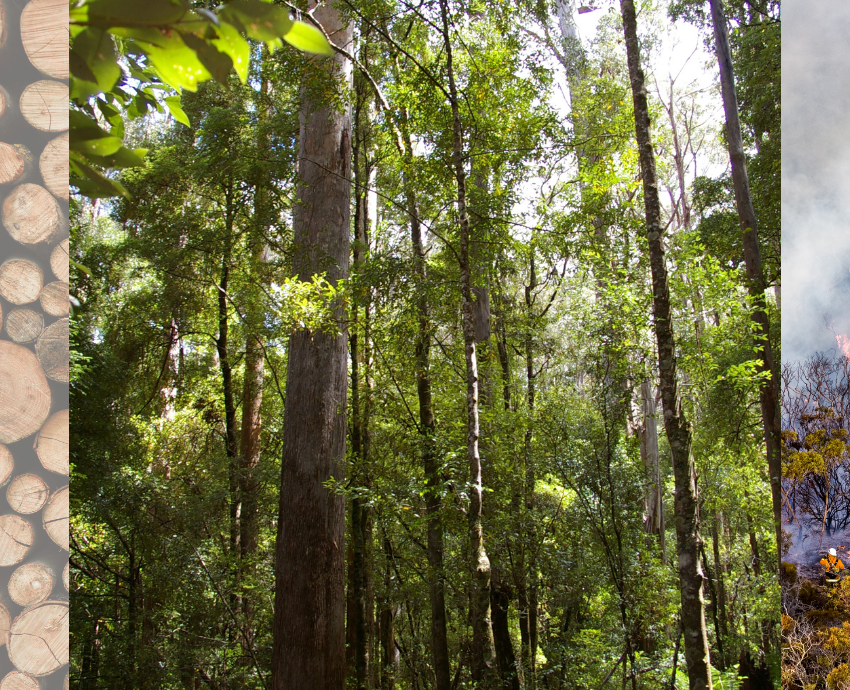
Tasmania’s Forest Carbon
Created by Jen Sanger and Steven Pearce
Produced by The Tree Projects, 2023
Run time: 30 mins
Tasmania’s native forest logging industry is the state’s highest carbon emitter. A new documentary, Tasmania’s Forest Carbon, created by science educator Dr Jennifer Sanger and cinematographer Steve Pearce — founders of The Tree Projects — presents a powerful argument to end the practice.
According to The Tree Projects, emissions from native forest logging in Tasmania have been estimated at 4.65 million tonnes of carbon dioxide (CO2) equivalent per year, making it the highest annual emitter in the Tasmanian economy. This is equivalent to the annual emissions of 1.1 million cars, or close to two and a half times the annual emissions of the Tasmanian transport sector.
Tasmania’s native forests are significant carbon sinks and draw down considerable amounts of carbon from the atmosphere. According to The Tree Projects, the reduction in native forest logging in Tasmania since 2011 has been a major factor in the state’s achievement of negative greenhouse gas (GHG) emissions, along with hydroelectricity.
If a forest is left undisturbed it will continue to store carbon indefinitely. The film explains that about 64% of a forest’s carbon is released within a few years of logging.
Most of the wood removed from Tasmania’s forests goes into single-use products such as paper, which have a short lifespan. Shockingly, as much as 40% of a logged forest’s biomass is incinerated, which immediately emits carbon dioxide, methane and nitrous oxides into the atmosphere.
Only about 6% of the forest’s carbon ends up in long-lasting wood products such as sawn timber, plywood and engineered wood used in buildings and furniture.
Around 30% of the forest’s biomass, mainly consisting of woody debris and stumps, gets left behind on-site. This can take up to 50 years to break down and emit the stored carbon. The film shows how, in Tasmania, this “waste” is incinerated at high temperatures following logging, using a helicopter, as part of a so-called “regeneration process”.
The release of GHG from native forest logging is only part of the story, as native animal habitat is also being destroyed, and these unique forests giants are also being lost to current and future generations.
The Victorian government recently announced that it would end all native forest logging by the end of the year. Tasmania should follow suit.
The Tree Projects argues that plantations can meet wood supply needs for the construction industry and are a low-carbon building alternative. The harvesting of plantations produces about 60% less CO2 emissions than native forest logging and 14 times more wood products per hectare.
Sanger is a forest ecologist and science outreach coordinator, who has spent more than a decade studying forests and the plant species that inhabit them. The Tree Projects is an environmental outreach organisation educating people about the world's most notable trees.
The Gold Coast Climate Community Night hosted a screening of the film on July 4 in Burleigh. Local climate activist, Jayita Belcourt hosted a Q&A with Sanger, who travelled up from Tasmania for the event.
For more information, visit: thetreeprojects.com.